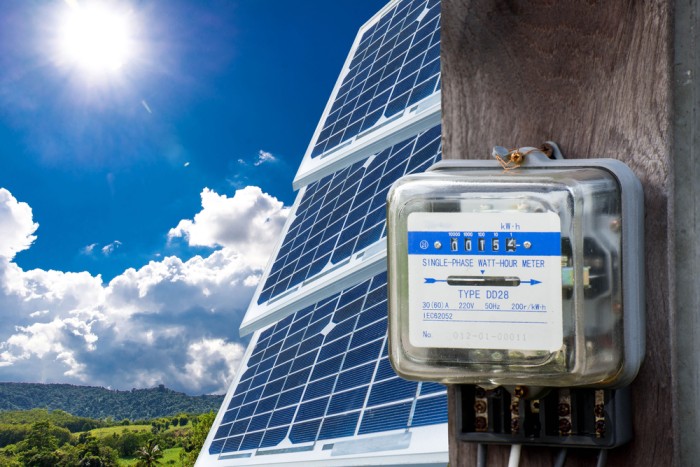The concept of sustainability has become increasingly vital in today’s world, with businesses and individuals alike striving to reduce their environmental footprint. One tool that has gained prominence in this pursuit is the green meter. But what exactly are green meter metrics, and what do they signify? In this article, we delve into the meaning behind green meter metrics and their significance in assessing sustainability.
What is Green Meter Metrics?
Green meter metrics refer to the measurements and indicators used to assess the environmental impact and sustainability of a product, process, or organization. These metrics encompass various aspects of environmental performance, such as energy consumption, carbon emissions, water usage, waste generation, and resource efficiency.
The Importance of Green Meter Metrics:
Evaluating Environmental Performance:
Green meter metrics provide a quantitative assessment of environmental performance, allowing stakeholders to gauge the sustainability of their activities. By measuring factors such as carbon footprint and resource efficiency, organizations can identify areas for improvement and track progress towards environmental goals.
Informing Decision-Making:
Incorporating green meter metrics into decision-making processes enables informed choices that prioritize sustainability. Whether selecting suppliers, implementing production methods, or designing products, considering environmental metrics helps minimize ecological impact and enhance long-term viability.
Enhancing Transparency and Accountability:
Public awareness and concern about environmental issues have heightened demand for transparency and accountability. Green meter metrics serve as a means of communicating environmental performance to stakeholders, including customers, investors, regulators, and the public. Transparent reporting fosters trust and credibility while motivating continuous improvement.
Key Components of Green Meter Metrics:
Energy Efficiency:
Energy consumption is a fundamental aspect of environmental impact, with implications for carbon emissions and resource depletion. Green meter metrics related to energy efficiency measure the energy consumed during production, operation, and disposal phases, aiming to minimize wastage and promote renewable energy sources.
Carbon Footprint:
Carbon footprint metrics quantify the amount of greenhouse gas emissions, typically expressed in terms of carbon dioxide equivalent (CO2e). By assessing emissions across the entire lifecycle of a product or activity, carbon footprint metrics highlight opportunities for emission reduction and carbon neutrality strategies.
Water Management:
Water scarcity and pollution pose significant environmental challenges, making water management metrics crucial for sustainable development. These metrics evaluate water usage, efficiency, and conservation measures, aiming to minimize water consumption and mitigate environmental impact.
Waste Reduction:
Waste generation and disposal contribute to pollution, habitat destruction, and resource depletion, necessitating metrics for waste reduction. Green meter metrics related to waste assess waste generation, recycling rates, landfill diversion, and hazardous waste management practices, promoting circular economy principles and resource recovery.
Life Cycle Assessment (LCA):
Life cycle assessment is a comprehensive methodology for evaluating the environmental impacts of a product, process, or service throughout its entire lifecycle. LCA metrics consider inputs such as raw materials, energy, and water, as well as outputs such as emissions, waste, and environmental degradation, providing a holistic perspective on sustainability.
Challenges and Limitations:
While green meter metrics offer valuable insights into environmental performance, several challenges and limitations warrant consideration:
Data Availability and Quality:
Obtaining accurate and reliable data for green meter metrics can be challenging, particularly for complex supply chains and global operations. Data gaps, inconsistencies, and inaccuracies may compromise the credibility and effectiveness of sustainability assessments.
Complexity and Interconnectedness:
Environmental systems are inherently complex and interconnected, making it challenging to capture the full extent of their impacts through isolated metrics. Green meter metrics may overlook indirect effects, feedback loops, and systemic interactions, necessitating holistic approaches to sustainability assessment.
Subjectivity and Interpretation:
The interpretation of green meter metrics is subjective and context-dependent, influenced by factors such as organizational priorities, stakeholder expectations, and regulatory requirements. Divergent methodologies, standards, and benchmarks further complicate comparisons and benchmarking efforts.
Scope and Boundaries:
Defining the scope and boundaries of sustainability assessments is essential for determining which environmental impacts are included and excluded. Green meter metrics may vary in scope, ranging from narrow indicators focused on specific parameters to comprehensive assessments that consider multiple dimensions of sustainability.
Future Directions and Innovations:
Despite the challenges associated with green meter metrics, ongoing advancements in technology, data analytics, and sustainability standards offer opportunities for improvement:
Digitalization and IoT:
The digitization of processes and the widespread adoption of Internet of Things (IoT) devices enable real-time monitoring, data collection, and analysis, enhancing the granularity and accuracy of green meter metrics. Smart sensors, blockchain technology, and cloud-based platforms facilitate transparency, traceability, and accountability in sustainability reporting.
Integrated Reporting Frameworks:
Integrated reporting frameworks, such as the Global Reporting Initiative (GRI) and the Sustainability Accounting Standards Board (SASB), promote standardized disclosure of environmental, social, and governance (ESG) performance metrics. By harmonizing reporting requirements and metrics, these frameworks facilitate comparability and consistency across organizations and industries.
Circular Economy Principles:
Embracing circular economy principles, such as resource efficiency, product stewardship, and closed-loop systems, enhances the relevance and effectiveness of green meter metrics. Metrics that capture circularity indicators, such as material reuse, remanufacturing, and product longevity, provide insights into circular economy performance and resilience.
DSG Energy, a subsidiary of the DS Group of companies, embodies a commitment to sustainability and renewable energy within the power sector. With a focus on contributing to Pakistan’s development, DSG Energy engages in renewable energy projects, aligning with the broader discourse on environmental stewardship and sustainability metrics. By leveraging its expertise in consultancy services for both public and private sector initiatives, DSG Energy strives to integrate green meter metrics into its operations, ensuring transparency, accountability, and environmental responsibility in its endeavors.
Conclusion:
Green meter metrics play a vital role in assessing environmental performance and guiding sustainability efforts across various sectors. By measuring factors such as energy efficiency, carbon footprint, water management, waste reduction, and life cycle impacts, green meter metrics provide valuable insights for decision-making, transparency, and accountability. Despite challenges and limitations, ongoing innovations and advancements offer opportunities to enhance the relevance, accuracy, and effectiveness of green meter metrics in promoting a more sustainable future.

